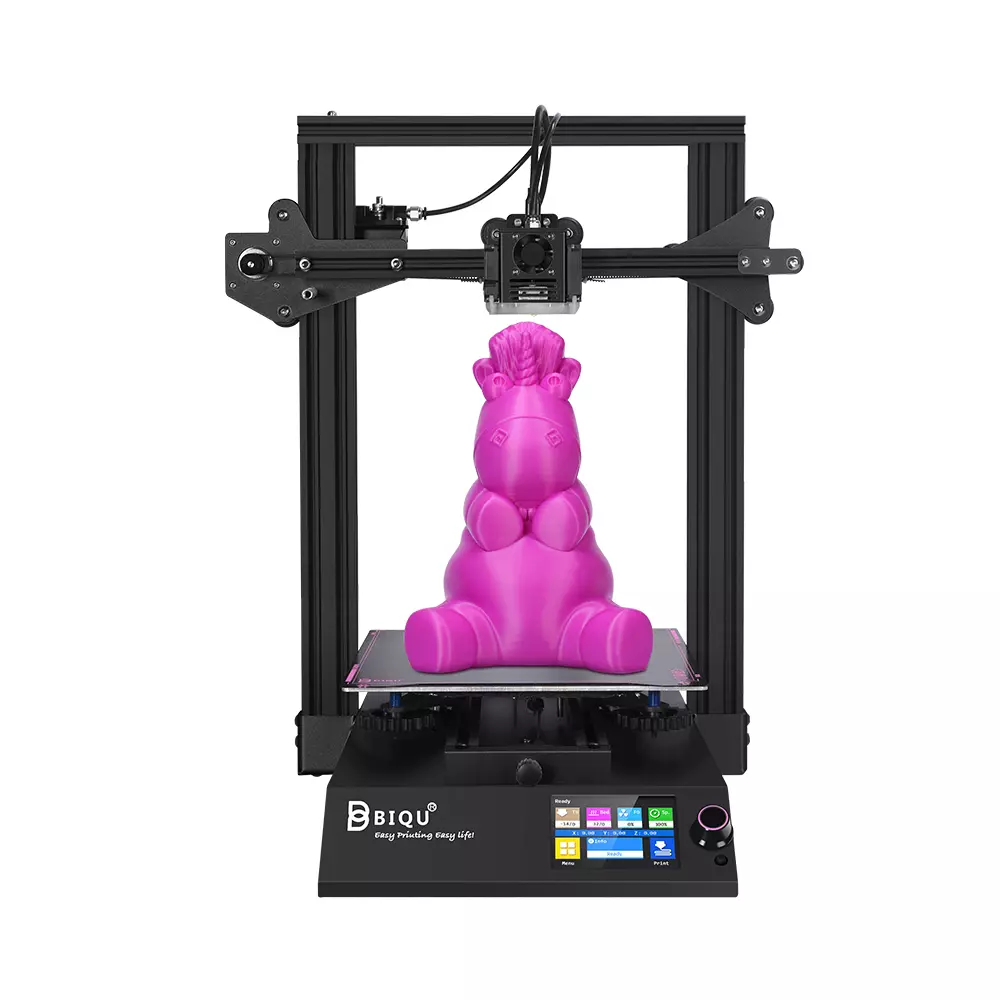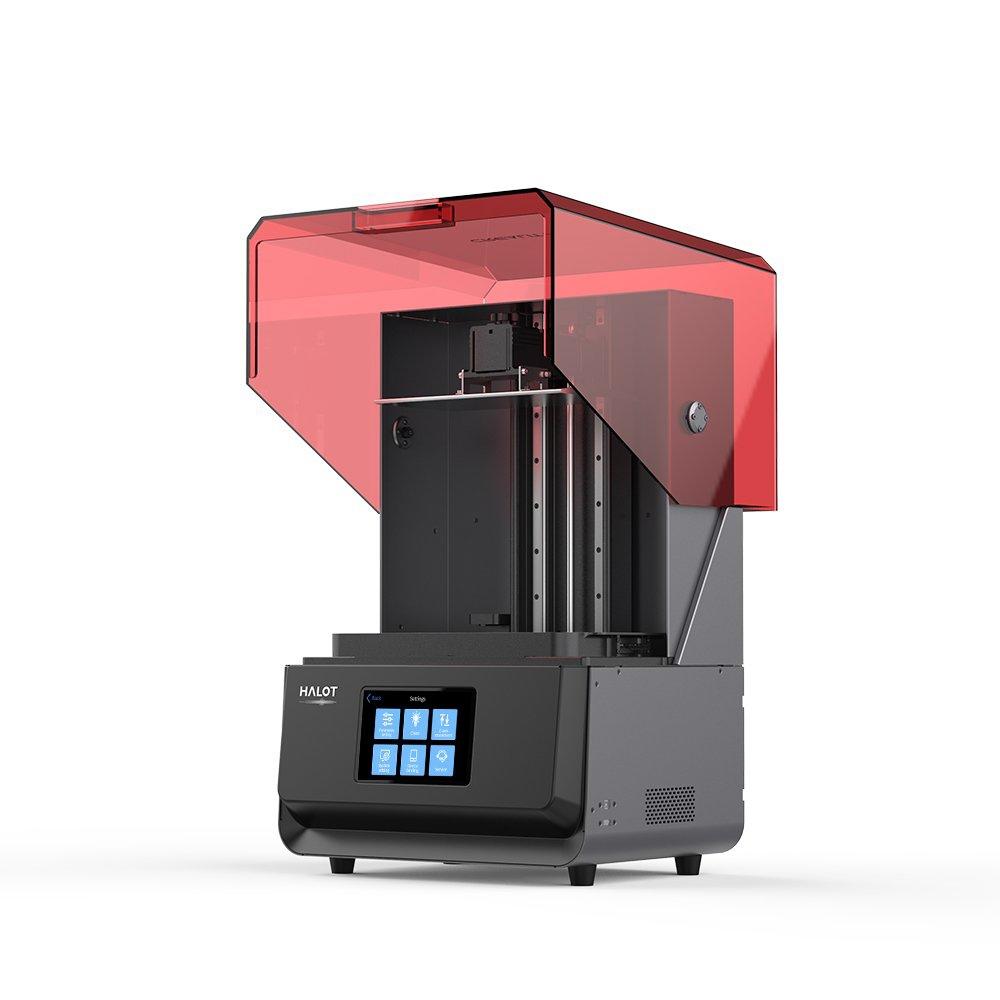Compare BIQU B1 vs Halot Max
Comparison between the best 3D printers
Choose the best 3D printer at the best price. The cheapest 3D printers are here.
Buy a 3D printer here with 3D Fila.
 |
 |
|
| Model | BIQU B1 |
Halot Max[BUY Halot Max] |
| Printing Material | Filament | Resin |
| Buy Filament for BigTreeTech BIQU B1 | Buy Resin forCreality 3D Halot Max | |
| Estimated price | $269,00 | $3000,00 |
| Manufacturer | BigTreeTech | Creality 3D |
| Release Year | 2020 | 2021 |
| Print Volume [mm] | 235x235x270 | 293x165x300 |
| Printer Size [mm] | 412x402x492 | 480x387x770 |
| Weight [kg] | 8,00 | 32,5 |
| Power Loss Recovery | YES | NO |
| Maximum Resolution [mm] | 0,1 | 0,03 |
| Processor | 32 Bits BTT SKR V 1.4 | |
| Display | Touchscreen TFT 3,5'' | Display touchscreen 5'' |
| Power Supply | 24V / 360W | |
| Connectivity | SD / USB | SD / USB / Wi-Fi |
| Operating systems | Windows, Mac, Linux | Windows, Mac, Linux |
| Date of registration in the system | 2021-04-14 | 2022-11-04 |
| Release date | 2020 | 2021 |
| Extra features | The BIQU B1 is an advanced 3D printer with a silent 32-bit BTT SKR V1.4 motherboard and ARM Cortex-M3 CPU, offering DIY interfaces (I2C, SPI, WiFi) and dual Z-axis. Its dual BTT B1 TFT35 V3.0 operating system allows real-time monitoring and multiple printing modes, including G-code visualization effects. It stands out for its BIQU SSS (Super Spring Steel), ensuring easy model adhesion and simplified removal, with the possibility of using it on both sides. It includes a filament sensor, automatically pausing printing in case of filament breakage. The multicolored RGB lights integrated into the hotend allow you to view the printing status even at night. Additional notes include the need for a BIQU-specific Type-C cable and extra interfaces for smart filament sensor and BL Touch. | The Halot Max printer stands out for its large print size (293 x 165 x 300 mm) and uses SLA technology. It has an integral light source for improved accuracy and a strong core with an advanced operating system. Its Z-axis module ensures high precision, supported by efficient slicing software. The machine offers online OTA updates and boasts an adjustable layer thickness between 10 and 200 microns. Its XY-axis resolution is 3840*2160, with 0.05 mm accuracy, and an integral 405nm light source. The printer includes a 5" touchscreen and multiple connectivity options, such as USB, Creality Cloud, and HALOT BOX WiFi. With cutting-edge technology, the Halot Max is ideal for printing small models with uniform precision, thanks to its self-developed lighting system and stable printing mechanism, which includes dual linear guides, ball screws, and an intelligent brake system. |
| Support for multiple colors and materials (AMS and CFS) | NO | NO |
Notes * |
||
| Cost-benefit | 7 / 10 | 5 / 10 |
| Hardware | 2 / 10 | 1.2 / 10 |
| Tela | . | . |
| Print volume | 3 / 10 | 3 / 10 |
| Performance | 1 / 10 | 9 / 10 |
| [BUY Halot Max] |
Conclusion |
| In conclusion, when comparing the BIQU B1 and Halot Max 3D printers, several key factors emerge that highlight their respective strengths and trade-offs. The BIQU B1, being significantly more affordable, offers a commendable balance of features suitable for hobbyists and casual users. It excels in factors such as power loss recovery, a smaller footprint, and a user-friendly interface with a real-time monitoring system. Additionally, its advanced motherboard and dual Z-axis contribute to its overall reliable performance. However, its print volume is more limited, and its maximum resolution is lower than that of the Halot Max. On the other hand, the Halot Max is priced at a premium but delivers superior precision and a larger print capacity, making it a more suitable choice for professional applications that require high-quality outputs. Its SLA technology and enhanced XY-axis resolution ensure exceptional detail, ideal for intricate models. Nonetheless, the lack of power loss recovery might be a drawback for some users, especially in environments where interruptions are common. Ultimately, the decision between the two should be guided by the user’s specific needs and budget. For those seeking a cost-effective solution for regular 3D printing tasks, the BIQU B1 delivers excellent value. Conversely, users prioritizing high precision and advanced capabilities may find the investment in the Halot Max worthwhile. Therefore, assessing the intended use and the features that are most vital to the user is essential in making the right choice. |

